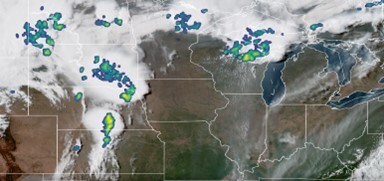Lockheed Martin has been given a contract by NASA to design and construct the National Oceanic and Atmospheric Administration’s (NOAA) next-generation GeoXO Lightning Mapper (LMX) equipment. With options for two more instruments, the base contract is worth about $297 million for two instruments.
The purpose of LMX, a single-channel near-infrared optical device, is to precisely identify, track, and quantify the length, width, and intensity of lightning flashes in almost real-time.
Onboard NOAA’s next-generation GeoXO weather satellites, the LMX instrument monitors and records lightning flashes. By providing consistent observations of severe weather across the Western Hemisphere, these lightning data will enhance storm research and forecasting and facilitate the identification of storms that have the potential to produce tornadoes. The imagers will enhance aviation, lightning danger detection, wildfire ignition detection, and hurricane intensity estimations.
The Geostationary Operational Environmental Satellites (GOES) series, which proved to be successful and whose final satellite, GOES-U, launched on June 25, 2024, is being replaced by NOAA’s next generation of satellites, the GeoXO weather satellite system. Now called GOES-19, the satellite is in geostationary orbit and is conducting on-orbit checkout and verification.
Lockheed Martin has been designing and manufacturing weather and environmental satellites and other Earth observation sensors for the military and civilian governments for more than 50 years.















